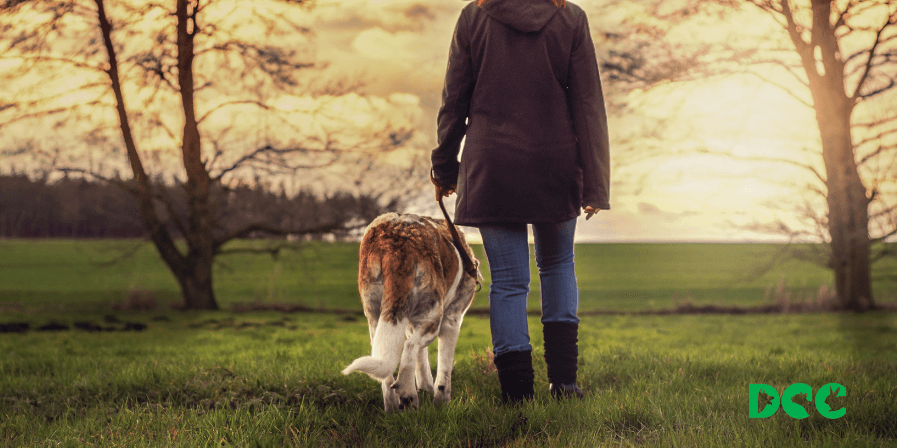All you want to know about hip dysplasia in dogs

Canine hip dysplasia is a disease in which the hip joint fails to develop properly, resulting in deformity and looseness, and a strange gait.
Canine hip dysplasia is a disease in which the hip joint fails to develop properly, resulting in deformity and looseness, and a strange gait. It is also associated with subluxation, dislocation and arthritis. Since it is often caused by heredity, it is important to monitor and control the weight of the dog from the time it is a puppy.
What is canine hip dysplasia?
-
How does a dog's hip joint work? The hip joint is located at the base of the dog's hind legs and is an important joint that connects the pelvis to the femur. The hip joint is formed by the femoral head, or ball, is located at the top of the femur, that fits into a socket called the acetabulum (also called cup), which is located in the pelvis.
-
Hip dysplasia in dogs We call hip dysplasia either of the conditions as follows. ✔The acetabulum is too shallow for the ball to fit properly. ✔The ball part (femur head) is deformed and cannot fit into the cup. ✔The ball part (femur head) is deformed, and the cup part (acetabulum) rises up to meet the deformed ball part (femur head).
-
Types of hip dysplasia in dogs In most cases of hip dysplasia, abnormalities appear in both the left and right hip joints. In the case of congenital hip dysplasia, there are other joints that are dysplastic, and elbow joint insufficiency is also common. The canine skeleton grows rapidly during the first year of life, and even if a dog has congenital hip dysplasia, symptoms do not appear immediately after birth, but often between 12 and 24 weeks of age (hip dysplasia in puppies).
In the case of genetically predisposed breeds, it is advisable to have an X-ray examination after the first year of life, when the bones have stopped growing, to check the condition of the joints. The timing of the examination may vary depending on the institution and type of examination. In addition, hip dysplasia can cause instability in the connection between the cup and the ball, which can lead to subluxation or dislocation. In addition, arthritis may occur as a secondary symptom, causing pain.
What are the causes of canine hip dysplasia?
Hip dysplasia is caused by genetics, but the following factors can make the condition even worse. Breeds that are more likely to develop the condition are discussed below.
-
Obesity Canine hip dysplasia is more likely to occur due to an imbalance between the rate of bone growth and the rate of growth of surrounding tissues. If your dog is obese by the time he is one year old, the weight of his body will have a profound effect on his developing bones and joints. Careful attention to diet and exercise can make a big difference in the degree of symptoms in the future.
-
Excessive exercise Excessive exercise, such as jumping only in the lower half of the body, is also a factor in the development of bone dysplasia.
What are the symptoms of canine hip dysplasia?
Hip dysplasia in dogs can cause the following symptoms, but there may be no obvious signs.
Hip dysplasia is a condition that makes it difficult, but not necessarily painful, to perform sustained exercise. In most cases, the onset of the condition is detected by an unusual gait, but dislocation and arthritis can cause severe pain.
-
Walk while swinging your hips from side to side This symptom is called “Monroe Walk” after the actress Marilyn Monroe. It is caused when a dog's steps are too shallow (narrow stride) and he walks without moving his hip joints, causing his hips to sway from side to side.
-
Bouncing on both hind legs with the center of gravity on the front leg It's called “bunny hop”, and looks indeed like a bunny-like jump or skip. It is as if the dog was doing a bunny hop or skip with both hind legs together.
-
Left and right hind legs come closer together and the stride becomes narrower. Left and right hind legs are closer together than the front legs. Their stride is narrower and they walk a little more slowly.
-
Boxy hips When you look at the hips of a dog with this condition from behind, they look wide and flat. This is caused by dislocation of the hip joint, which changes the position of the greater trochanter.
-
They hate exercise They don't like to exercise, such as climbing stairs or going for a walk.
How to diagnose canine hip dysplasia?
-
Gait test and visual examination Visually examine the dog as it stands and walks. Check for “boxy hips” from behind, and check for “Monroe walk” or “bunny hop” by actually letting the dog walk. Also, check the difference in stride length between the front and rear legs. A bipedal gait test is also performed, in which the patient is asked to lift both front legs and walk on both rear legs. If there is hip dysplasia, the dog will show reluctance.
-
Palpation Palpate and examine the dog's hind legs and hips to check for the following symptoms and conditions. ✔See if the dog sits immediately when you press his pelvis while he is standing ✔Different circumference of the right and left thighs ✔Hip joint making a knocking sound when the greater trochanter is touched while walking (called a “cranking hip”) ✔Feeling pain when stretching or opening the hip joint.
-
X-ray examination X-rays are taken using the “hip extension standard imaging method,” in which the animal is fixed in a symmetrical position on its back.
-
CT examination In some cases, a CT scan using three-dimensional CG images is performed to see the shape of the hip joint.
How to treat canine hip dysplasia?
Early detection and treatment is the basic principle, but depending on the age of the dog and the degree of progression, conservative or surgical treatment options will be chosen after consultation with the veterinarian.Conservative treatment / Medical treatment
-
Weight control In the case of mild symptoms, it is important to prevent obesity, as it can lead to deterioration of the disease. Please control your dog's diet following the recommendation of your veterinarian.
-
Administration of medication If the dog is in pain, anti-inflammatory drugs and painkillers can be given to reduce the pain, and chondroprotective drugs can also be administered. Restrictive exercise should be continued during the medication to prevent worsening of the symptoms.
-
Rehabilitation / Physical Therapy Restrictive exercise should be performed under the guidance of a veterinarian. In addition, physical therapy such as laser and heat therapy, as well as an environment that does not put too much stress on the hip joint, are also provided.
Depends case to case, consult the vet for treatment of hip dysplasia in dogs
Surgical treatment/surgeryTaking into consideration the severity of symptoms such as difficulty walking, the degree of arthritis pain, and the patient's age, the following surgical treatments are performed.
-
Femur head resection The head of the femur is removed to prevent arthritis and pain. After the surgery, early rehabilitation is required.
-
Three-point pelvic osteotomy This method is mainly used for dogs in the late stage of growth (less than one year old). Three points of the pelvis are cut, the cup is rotated to change the angle, and fixed with a special implant.
-
Total hip replacement This is a surgery to replace the entire hip joint with an artificial hip joint, just as in humans.


 How can we help?
How can we help?